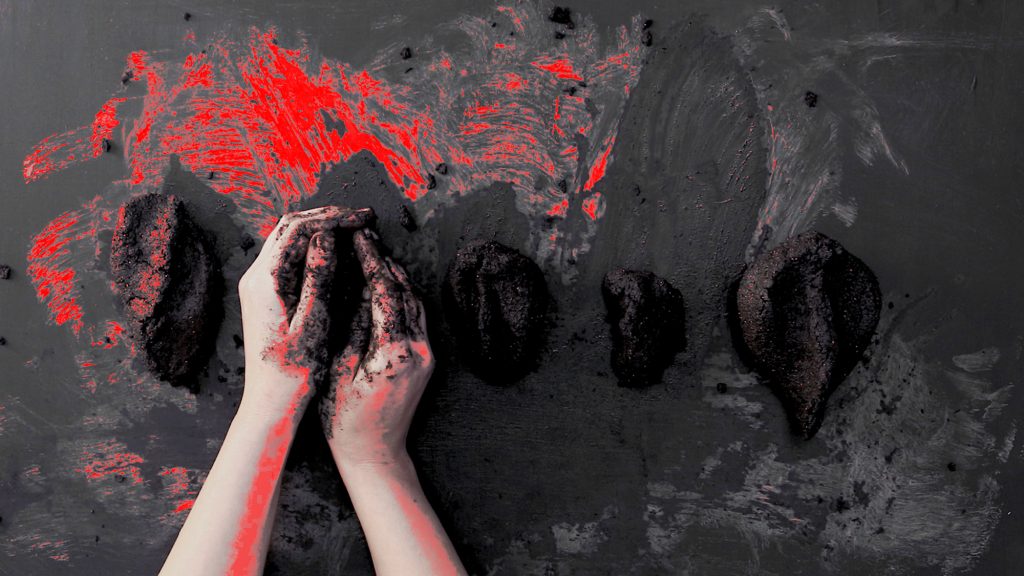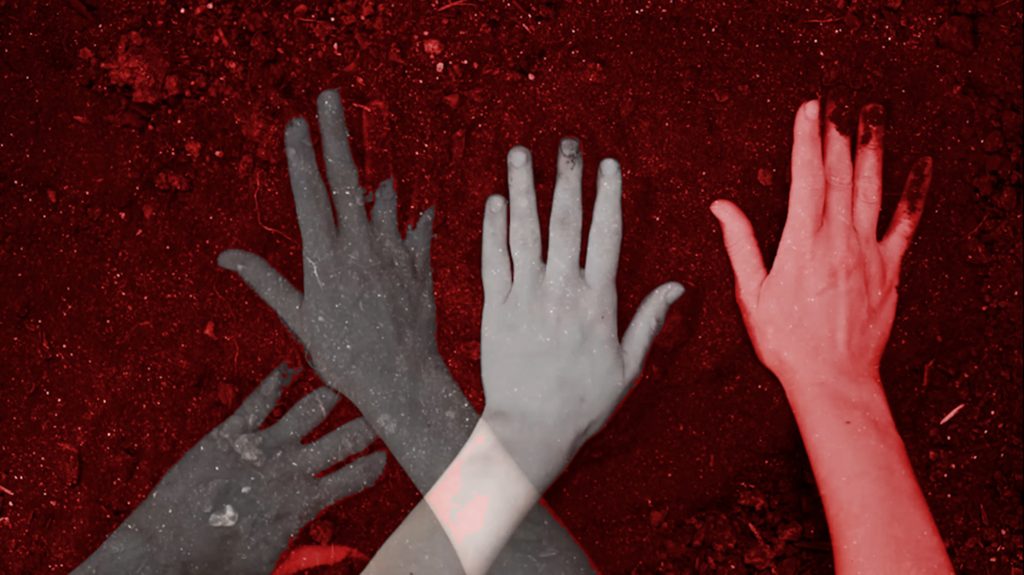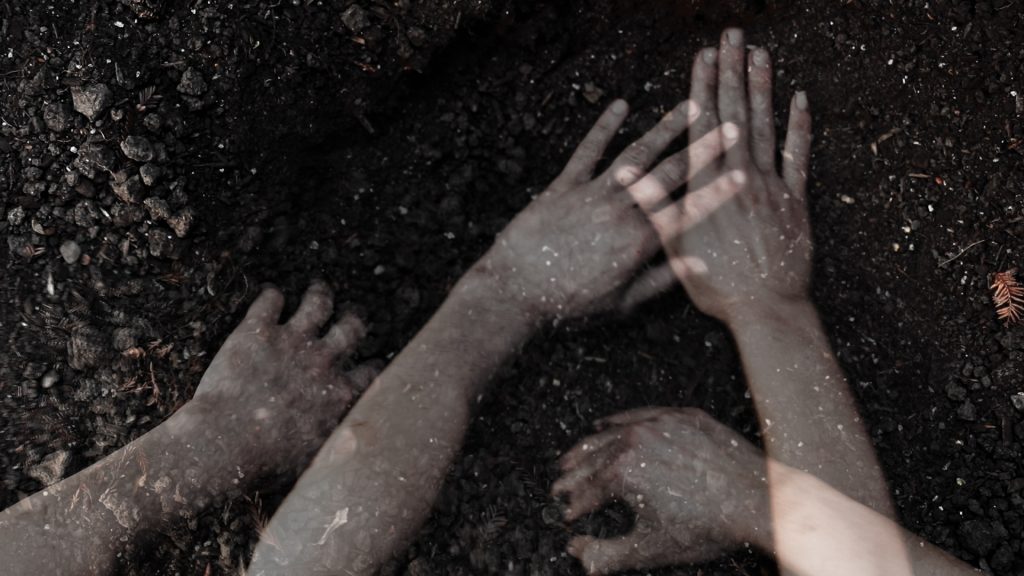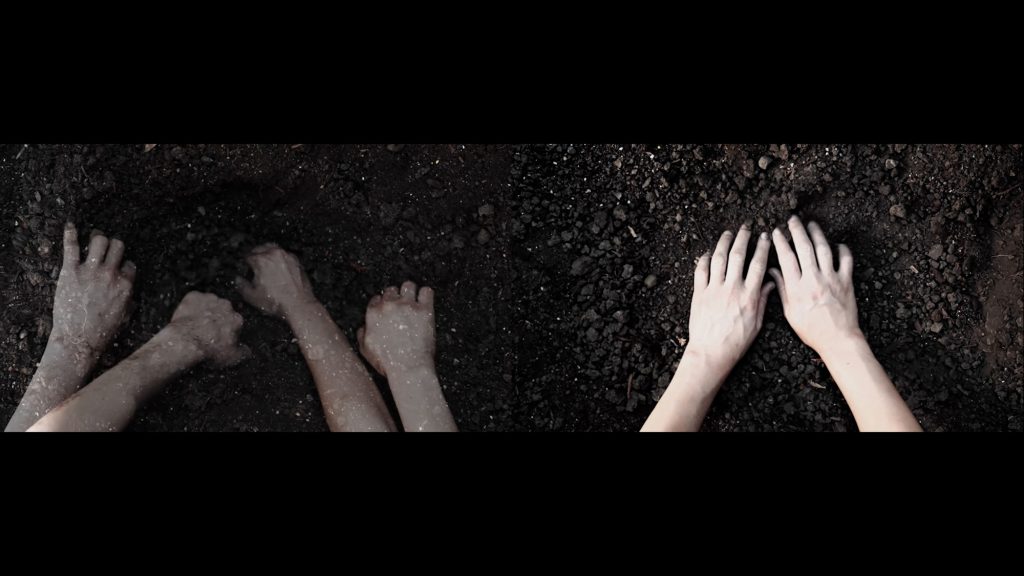Kiana Honarmand’s newest video performance Requiem, touches on the human relationship between borders, rebirth, and geography. This installation in the Frank-Ratchye Studio Space features Honarmand’s first work in this new medium as she explores, through the manipulation of earth and dirt, a different way to communicate how one’s place of origin and citizenship status affects how they are perceived. Read the interview below to experience Exhibition Fellow, Jess Punzalan, in conversation with Kiana Honarmand.

Jessica Punzalan: Requiem is different from your past work, in that it’s a video performance. What about this new medium spoke to you for Requiem?
Kiana Honarmand: I started really working on video, maybe a year, year and a half ago. So it’s a very new medium for me. I think I started really focusing on it during the pandemic because I didn’t have access to my normal tools. But another reason was that I felt like with this type of work and what I was thinking about making, and what would be appropriate, I thought about time based media. So that’s why I started working with video and performance since I thought that would be an appropriate medium for this specific concept.
Jessica Punzalan: I think it’s really interesting how you brought up how the pandemic led you towards experimenting with video. Can you go a little bit more into the process of making this video performance?
Kiana Honarmand: The audio has kind of been like an experimentation and exploration of how I can use audio to set the atmosphere of the video. Like, there’s one very short part that is my voice, but that main thing I was focusing on when making the sound was conveying the message and feelings behind it. It’s very much been an experimentation and something that I really want to dig deeper into — kind of make more of my own sounds and things like that. But I’m super new at that and I would love to learn more.

Jessica Punzalan: And what about the duration of the film? Does that have any significance as well?
Kiana Honarmand: So, that’s a great question. When I was recording the whole thing, it was much longer, but then I was thinking a lot about the process. I didn’t think about it as something that you would necessarily sit down and watch. It’s not like a film with the exact beginning and ending. So it’s more about the process. I was thinking about what would be a good time period that I could still show most of the process and be able to have people still interested in it. It was just finding a balance between wanting to show the entire process and the story and emphasizing on the fact that it is a process, but also not having it be way too long.
Jessica Punzalan: I think you struck a really good balance with the duration. You can drop in and still get a complete picture of what you’re trying to convey. And at the same time, when I was sitting with your piece, I got lost in how meditative it was. I felt like I would pick up new details each time I watched your video. Looking at the definition of the word ”requiem” for which this piece is named after, can you speak a bit about how this title relates to the piece?
Kiana Honarmand: I was thinking a lot about really trying to remember different concepts like the past, the history of our Earth, and where things come from, and really thinking about the whole idea of remembering and paying an ode to our planet, how we evolved from the land and how, in religion and mythology, we come from the earth or dirt or things like that. I was thinking a lot about going back to that and paying homage to those things.

Jessica Punzalan: I was also picking up on how in mythology earth and dirt usually have something to do with rebirth and creation. But when you put it in the context of Requiem, and reflecting on borders, and how geography separates us you’ve created a really interesting dichotomy. Has this piece changed or influenced your own perception of borders and identity?
Kiana Honarmand: When it comes to my perception of borders, that part in particular hasn’t changed. But when I was in the process of making the video, I went through the passing of a family member so that idea of having to say goodbye between my family across three different continents over video chat — that really made the idea of birth and death much stronger for me since I was dealing with all of those things. I was able to really experience the issues I was talking about with making the video. I hope I was able to answer that question.
Jessica Punzalan: That was great! I guess the past several months have really solidified just how vast the distance between us can be. Is there anything else that you might want to share that we may not have discussed? I want to allow for some space to talk a bit more about your work or what you’re looking forward to with your practice.
Kiana Honarmand: Sure! I’m just really honestly looking forward to getting feedback and talking to other people about it. I feel like during the pandemic, we’ve been working so much in a vacuum. Especially working with a new medium with zero official training. It’s interesting, or it’s really important to kind of have a conversation to see what other people thought and find out what message they’re getting or how the work is affecting other people. I feel like for me, a big part of my studio practice is being able to generate conversation around these topics. I’m hoping to be able to hear more about what people think.

